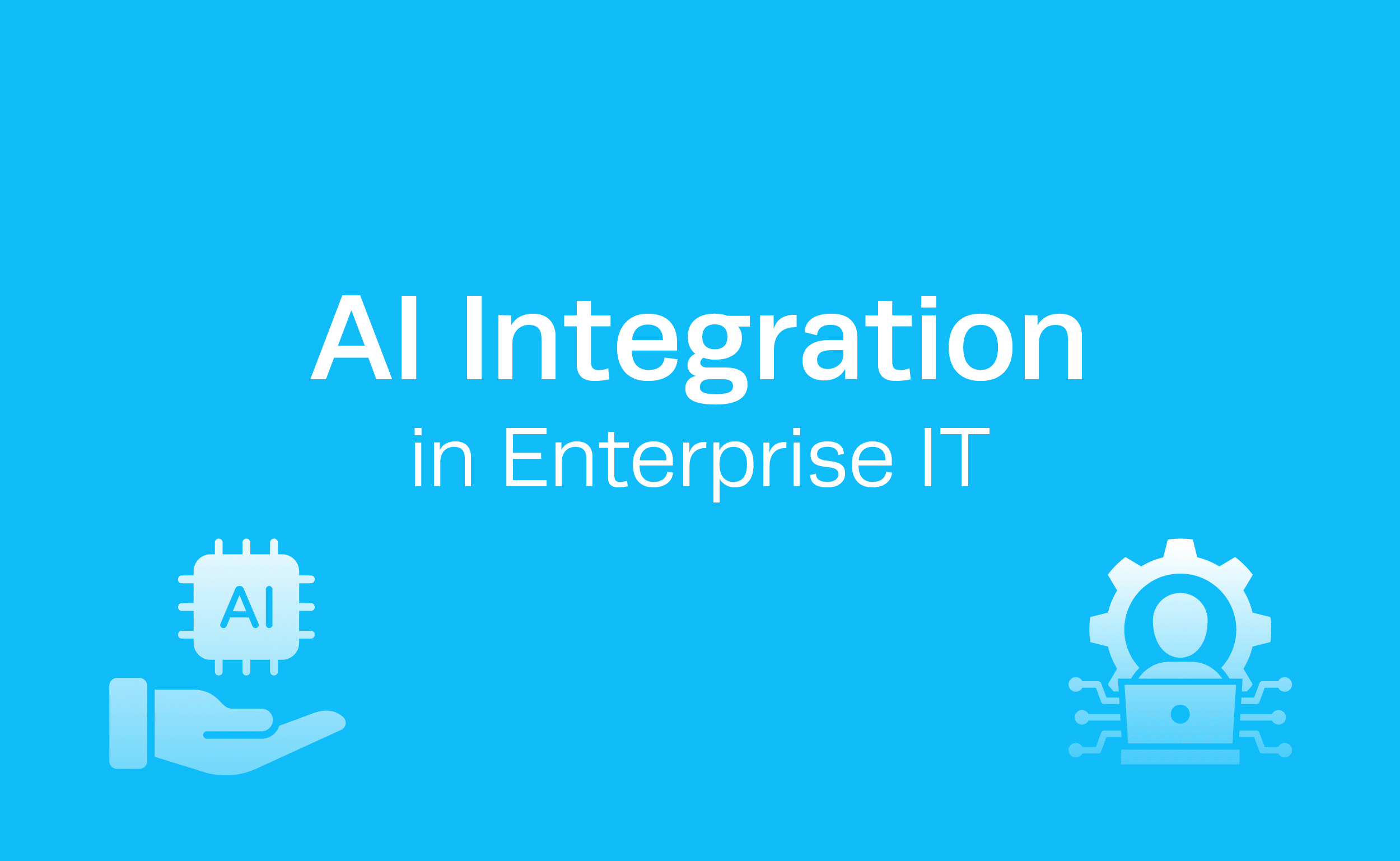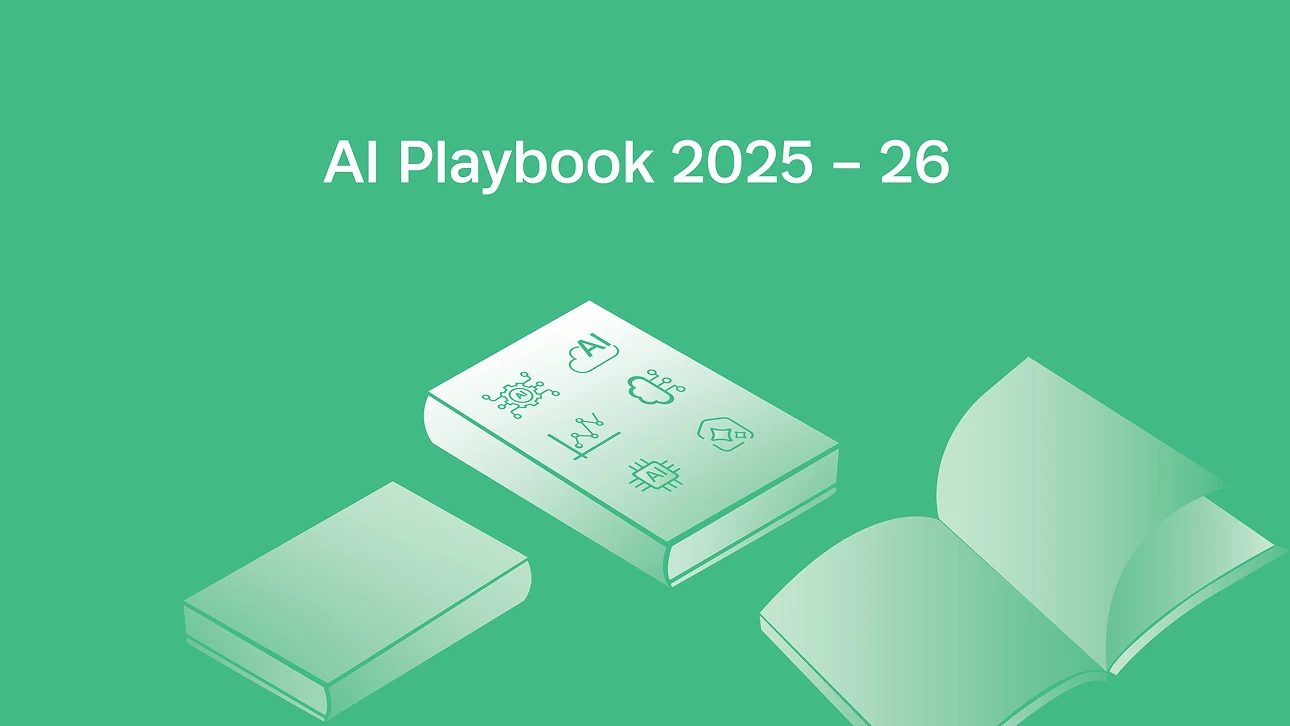AI isn’t coming, it’s already here.
It’s in your analytics dashboards, customer support systems, and the decisions your competitors are making faster than you are.
Yet, while artificial intelligence promises to streamline operations, sharpen decision-making, and spark innovation, integrating it into existing enterprise IT systems feels, for many, like changing the engine while the plane is still in flight.
The truth? AI is not hard to adopt. It’s hard to integrate.
And that’s where the real story begins.
The AI Imperative: Why Integration Can’t Wait
Artificial intelligence is no longer an experiment; it’s a competitive necessity. In a world where speed, accuracy, and foresight define market leaders, enterprises that fail to embed AI risk becoming obsolete.
According to McKinsey & Company – The State of AI in 2023, 72% of businesses already use AI in at least one function, from automating customer support to forecasting demand. But less than a quarter have managed to scale it successfully.
That gap, between adoption and integration, separates those who dabble from those who dominate.
Why AI Integration Is So Difficult
Implementing AI is easy when it’s standalone. The challenge begins when it must coexist with your complex, decades-old IT ecosystem. Let’s look at the core barriers:
1. Data: The Double-Edged Sword
Every enterprise has data. Few have usable data.
AI thrives on structured, accessible, and high-quality information, yet most organizations wrestle with fragmented systems and siloed databases.
Without data governance, AI insights remain shallow, biased, or inaccurate. Clean data isn’t just a technical requirement; it’s the foundation of trust.
2. Talent: The Missing Link
AI integration isn’t plug-and-play. It requires collaboration between IT, data science, and operations, yet 33% of companies cite a shortage of skilled AI professionals as a key barrier according to, CloudFactory AI Readiness Report.
Upskilling internal teams and building cross-functional expertise are no longer optional; they’re survival strategies.
3. Legacy Systems: Old Foundations, New Challenges
Legacy infrastructure is where innovation goes to slow down.
Traditional IT systems weren’t built for real-time learning models or cloud-native AI workloads. Integrating AI into such environments means tackling compatibility, latency, and security, often all at once.
Modernization isn’t a side project anymore; it’s a prerequisite for progress.
4. Ethics and Security: The Hidden Minefield As AI becomes more pervasive, so do the ethical risks. Without clear governance and accountability, the power of AI can quickly turn into liability.
Turning Challenges into Catalysts
For every obstacle, there’s an opportunity, if enterprises are strategic about how they approach integration.
Here’s how leaders are transforming roadblocks into roadmaps.
1. Start with Data Discipline
AI’s intelligence is only as good as the data behind it.
Implement strong data governance frameworks: define ownership, enforce data quality standards, and create unified data pipelines across departments.
A centralized data strategy transforms AI from an experiment into an enterprise asset.
2. Build Capability Before Technology
Buying more tools isn’t the solution, building AI literacy is.
Upskill teams across levels, from executives to engineers, so everyone understands how to work with AI, not against it. Internal education and collaboration beat external recruitment in the long run.
3. Modernize What Matters
Full system overhauls are expensive. Start small.
Identify key friction points in your IT landscape, legacy APIs, on-prem bottlenecks, or outdated middleware, and replace them with cloud-native, scalable solutions.
Each modernized layer creates a smoother runway for AI adoption.
4. Embed Ethics in Every Model
Responsible AI isn’t just about compliance, it’s about reputation.
Create ethical playbooks defining transparency, fairness, and accountability. Ensure explainability is built into every model’s lifecycle.
Trust will soon be as valuable as accuracy in the AI era.
From Hurdles to High Ground: The Reward of Integration
Integrating AI successfully doesn’t just cut costs, it reshapes the organization.
Enterprises that bridge data, technology, and talent effectively gain:
- Predictive foresight: seeing opportunities and risks before they materialize.
- Operational agility: systems that learn and adapt in real time.
- Customer intimacy: experiences that feel personalized at scale.
Integration, not experimentation, is what drives lasting transformation.
How Bay6.ai Helps Enterprises Make It Happen
Once your AI strategy is in place, the right tools should fit into it, not force it to change.
That’s where Bay6.ai steps in.
We help enterprises move from pilots to production through modular, enterprise-grade AI systems designed for integration, not isolation:
- Connect6 – Your intelligent first line of response. A full-stack self-service solution for industries where query volumes are high, patterns are repetitive, and support must scale without added headcount.
- Model6 – Your data already knows what’s likely to happen. Converts historical data into predictive intelligence, delivering production-ready models built for speed and scale.
- Forge6 – Your AI journey deserves a roadmap. Helps enterprises move beyond experimentation with the right roadmap, governance, and solution delivery focused on measurable, sustainable impact.
- Vision6 – AI-powered vehicle inspections for faster, smarter decisions. Enables real-time, self-guided assessments for insurance, banking, and automotive industries, reducing costs and fraud while accelerating decisions.
Our mission isn’t to add another tool to your stack, it’s to help you build your entire AI operating model, from pilot to production.
Final Word
AI integration is not a technical milestone, it’s an organizational awakening.
It forces enterprises to rethink how they manage data, talent, and trust.
The road ahead is complex, yes. But for those willing to modernize, align, and lead with intent, the reward is immense: a smarter, faster, more adaptive enterprise ready for the age of intelligent systems.
Talk to us. Let’s build what moves the needle.
Book a Demo


